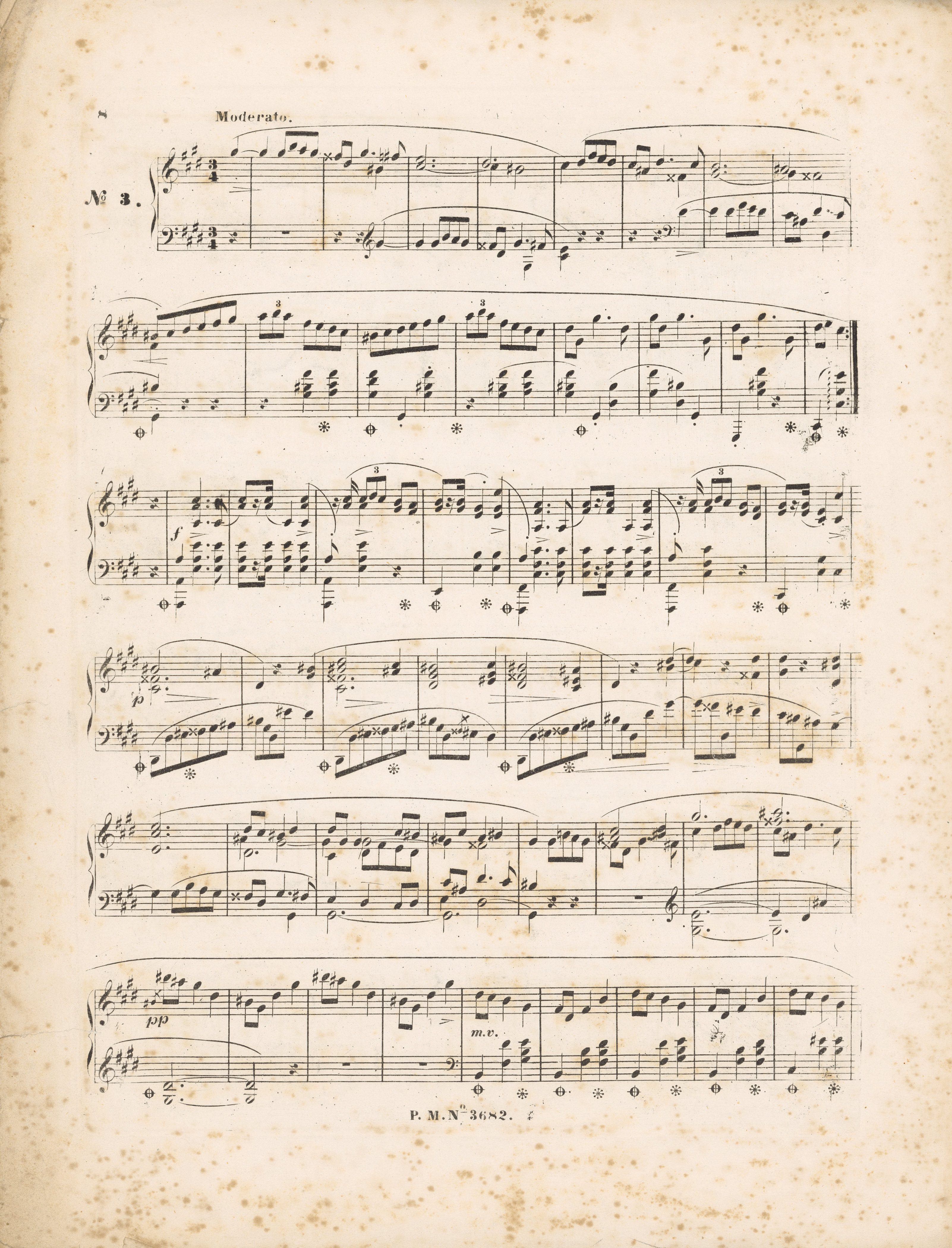



The accents in b. 17-24 and analog. are problematic, as far as the differentiation between the short and long marks is concerned. The editions contain almost exclusively short accents, while the small differences in length are of accidental nature. There are exceptions, i.e. b. 17, 109 and 115, in which FE feature clearly longer marks, some of them being probably a result of Chopin's proofreading (b. 109 and 115). Therefore, the below analysis concerns mainly the autographs. We group the accents according to the place they occupy in a four-bar section: we discuss, respectively, the accents in b. 17, 21 and analog., 18, 22 and analog., etc.:
- The accents in b. 17, 21 and analog. are clearly long in both autographs; in the case of the first one, in AF one could even ponder whether it is a diminuendo mark, as interpreted in FE. However, the mark in AI is an argument against such an interpretation; it is slightly shorter, yet it certainly concerns the chord on the 2nd beat of the bar. The mark in [AG] must also have been meant as an accent, since in GE it was given the form of a common short accent. The marks in b. 21 and 113 are typical long accents; the shape of the shorter mark in b. 109 is also typical.
- The accents in b. 18, 22 and analog., in AF narrow, horizontal and quite long, make an impression of long accents. However, Chopin did not have much space between the chords of both hands, which could have influenced their shape. The marks in AI are shorter, particularly in b. 22. Moreover, it is also AF that indicates some hesitation concerning the type of the mark: in b. 22, 110 and 114 Chopin initially wrote accents over the R.H. chords; all of them, eventually deleted, were clearly shorter. On the other hand, the interpretation of the accents of AI is also ambiguous, i.e. the marks are short but placed after the chord, which was probably one of the Chopinesque manners of writing long accents (cf. the commemorative autograph of the Etude in A Minor, Op. 10 No. 2, b. 45-46).
- The marks in b. 19, 111 and 115 (in b. 23 the accent is absent in all sources) could be considered quite typical short accents if not for their size, since all are clearly longer than, e.g. the marks in b. 20, 24 and analog. In addition, it is also Chopinesqueproofreading of the mark in b. 115 that is an argument for a long accent.
- All accents in b. 20, 24 and analog. are exemplary short accents.
The above observations are the basis for the following editorial decisions:
- in b. 17 to the main text we adopt a contextual interpretation of the mark of AF, i.e. a long accent. In the main text we give long accents, unequivocal in the autographs, also in the remaining bars of this group;
- in b. 20 and analog. we give short accents, which are featured in all sources;
- in b. 18 and analog. in the main text we adopt short accents due to the rhythmic analogy with b. 20 and analog. and due to a similar function of the ending of the two-bar motif. We suggest long accents, closer to the literal interpretation of the marks in AF, as an alternative version;
- in b. 19 and analog. to the main text we adopt long accents on the basis of the authority of Chopinesque proofreading of FE in b. 115*. We suggest shorter marks as an equivalent option.
In the main text, long and short accents appear alternately, whereby the long ones always fall on the 2nd beat of the bar, while short – on the 3rd one. The alternative version, after changing the accents in the inner bars, features long accents in the first half of each four-bar section and short ones in the second one. Long marks always emphasise the full, six-note chord, which constitutes the harmonic base of these bars. Other solutions also seem to be musically justified and compliant with the notation, e.g. long accents only in b. 17 and analog., hence on the dotted crotchets, which are the longest rhythmic values in this section.
* In the same situation in the Mazurka in A Major, Op. 24 No. 3, b. 5, 9 and analog., Chopin also indicated rather long accents.
Major, Op. 24 No. 3, b. 5, 9 and analog., Chopin also indicated rather long accents.
Compare the passage in the sources »
category imprint: Graphic ambiguousness; Differences between sources
issues: Long accents, Errors in EE
notation: Articulation, Accents, Hairpins



 in
in 

